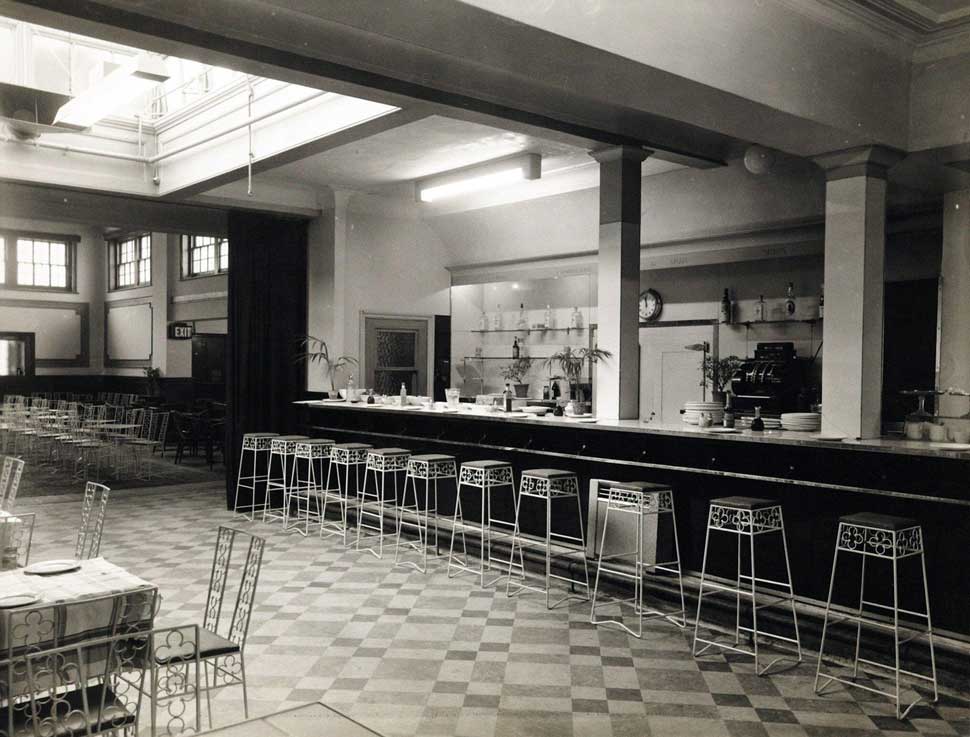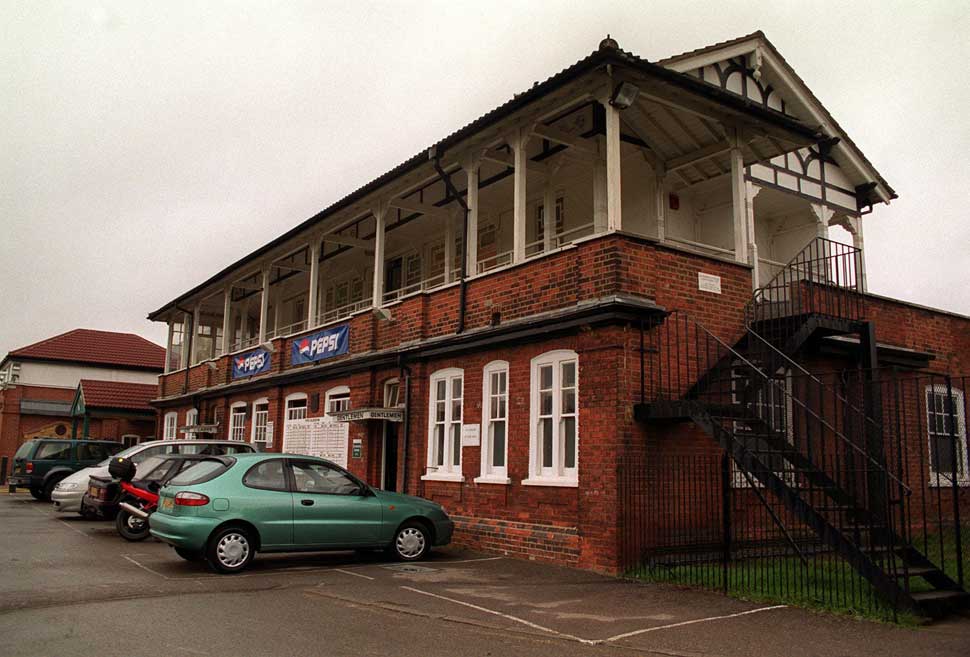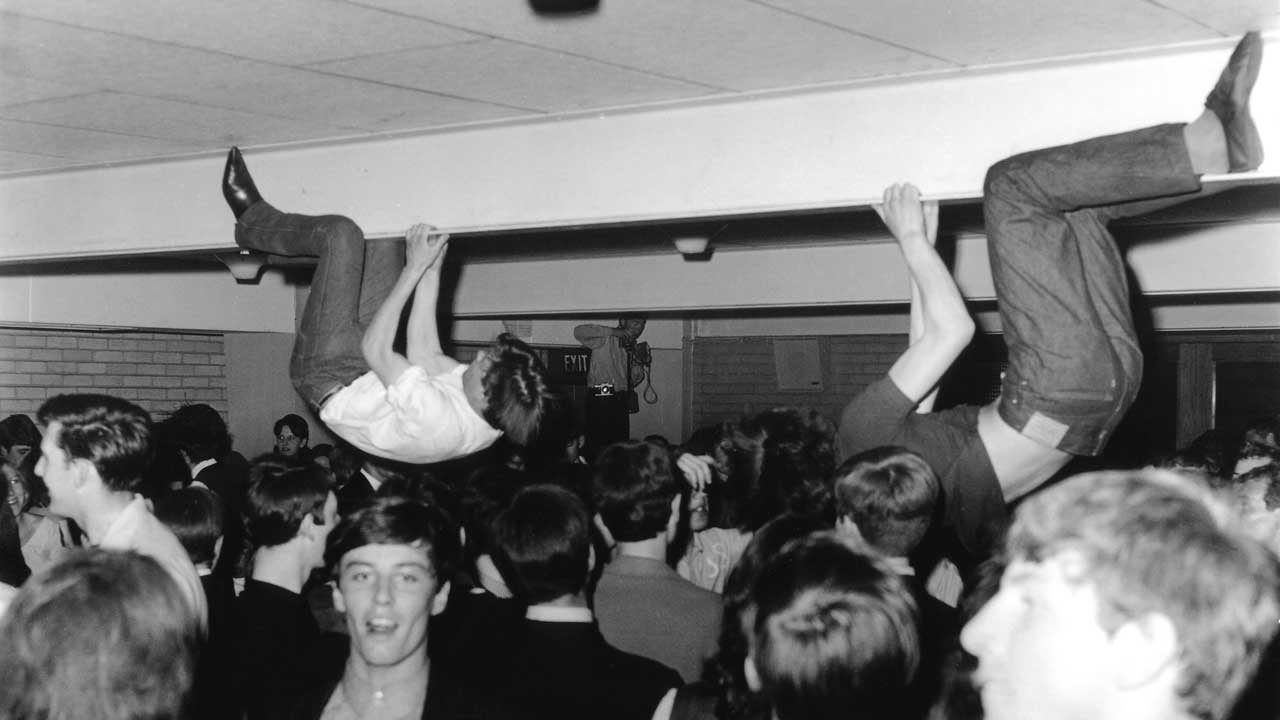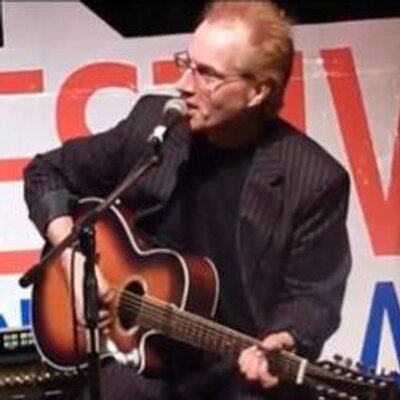The Crawdaddy grabbed a place in rock’n’roll history back in 1963. This Richmond R&B club was the backdrop for a little-known pub-blues combo which grew into an outrageous pop group and then went on to become the World’s Greatest Rock’n’Roll Band. But on the first night of The Rolling Stones’ six-month Sunday residency at the Crawdaddy – in late-February 1963 – there were twice as many people on stage as there were in the audience (at that point the group was still six-strong with Ian Stewart on piano). One month later the place was heaving – willingly hypnotised by the band’s Bo Diddley rhythms.
Before this scene sprang up, the Crawdaddy (a phrase popularised by Bo Diddley, the word comes from an old negro dance ‘the craw daddy’) was the Station Hotel – an unremarkable trad jazz venue taken over by a remarkable Russian/Swiss émigré music critic, film producer and promoter the – 31-year-old Giorgio Gomelsky. Giorgio set up his business in Richmond after relations between him and some Soho promoters got tense.
At the Station Hotel, Gomelsky decided to risk the £5 needed to promote a gig by this unusual blues group that he’d befriended: “For the first night, “ Giorgio now laughs at the memory, “I made a poster and even spelt ‘blues’ wrong… so it read ‘British Rhythm & Bules Night with The Rolling Stones’. Three people turned up and Brian Jones nervously said to me – with his lisp – ‘there are three people in the audience – is it worth playing?’ And so I asked him how many people he thought the room could hold, and he reckoned about 100. So I told him to go on and imagine that the band was playing to a 100 people. He did, and I think it was the best Stones show I ever saw…”
Word spread fast. Too fast, because the club soon fell victim to its instant notoriety. The Stones’ gigs were reported disapprovingly as rave-ups by the national press: “The secretary of Ind Coope Breweries” recalls Giorgio, “saw a newspaper story and didn’t want to believe that all this was going on in one of their nice pubs. So we were told to leave.”
With the help of his good friend and owner of the Marquee club, Harold Pendleton, the intense Gomelsky relocated to another venue nearby, as Harold explains: “Giorgio was crying to me about it, something like… ‘Grrrr… Harold… Station Hotel – the bastards!’ So I said ‘Look, I’ve just done a deal with Commander Wheeler at the Richmond Athletic Association to put my jazz festival on there and they’ve got a nice clubhouse…”
It was there that the Crawdaddy found a more permanent and bigger home which over the next couple of years was a launchpad for other bands as well The Rolling Stones. As the R&B boom took a hold, Gomelsky and his right-hand man Hamish Grimes then extended the Crawdaddy franchise to the Star Hotel in Croydon and to a modern sports hall in Feltham.
In this way he created an R&B circuit for the Yardbirds, Animals and Pretty Things – bands that started out as Chicago blues fanatics, but then developed their own interpretation of the music and took it into the charts. But, undoubtedly, the Stones were the frontiersmen.

It was down to them that between 1963-65, British rhythm and blues got recognition after at least five years of uphill struggles. A similar thing had happened for British trad jazz in 1960, and for British skiffle in 1956. The similarity being that cult-status music suddenly surged into the mainstream, and this surge was largely image-led. In the case of trad jazz it was clarinettist Acker Bilk, his number one smash Stranger On The Shore and – most important of all – his bowler-hatted Victoriana stage get-up.
Skiffler Lonnie Donegan’s onstage presence and energy was frenetic compared to the deadpan, formal woodenness of 1950s dance bands. With his supercharged version of Leadbelly’s Rock Island Line, Donegan went Top 10. This chart success upgraded skiffle from an amusing sideline of New Orleans revivalist jazz (a movement spearheaded by British band leaders Chris Barber and Ken Colyer) into a national teenage craze.
Then in 1963, young Mick Jagger’s cocksure attitude and lampoonable hand gestures guaranteed an unknown blues band lots of pop star exposure. The Stones’ image consultant in their rise to fame was 19-year-old music-biz hustler Andrew Loog Oldham. It was at the Crawdaddy that he first saw them and immediately realised that he was looking at the Next Big Thing. The seriously pushy Oldham then snatched the Stones right from under Gomelsky’s nose and became their manager – but Giorgio was the real visionary who saw the commercial potential of R&B in the shape of a national club network whose focus was the Crawdaddy.
Around the time – mid-1962 – that the Rollin’ Stones (as the band were first billed) had begun to play the London pubs, Gomelsky recalls writing a daring article for Jazz News & Review (owned by Harold Pendleton and read by trad jazz diehards) singing the band’s praises: “In the article, “ Gomelsky points out, “I said, ‘You’ve got to wake up… you can’t go down this road [i.e. neat and tidy trad jazz] any more. You’re killing the goose that laid the golden egg. We want a new generation of people to get involved with new music… not that pop nonsense – the Marty Wilde-type of thing which was a degenerate and pale imitation of American rock’n’roll.”

And so this was how the British “blues tribe” got its new young blood – with encouragement from older 30-something jazzmen like Chris Barber, older bluesmen like Alexis Korner and Cyril Davies, and older promoters like Harold Pendleton, who in the 1950s had opened the Marquee as a jazz venue, and for 10 years he also managed Barber.
But on one occasion this avuncular encouragement took a back seat, as Harold recalls: “The Stones were the interval band for Cyril Davies on Thursday R&B nights at the Marquee. After one gig I was coming out of the club with Cyril and there was a band loading on the other side of Poland Street. So I said a friendly ‘Goodnight!’ and they replied ‘Fuck off!’. I said to Cyril ‘What? What’s the matter with them? Cyril said ‘Oh, I’ve just sacked them…’ I asked ‘Who are they?’ and Cyril said, ‘They’re The Rolling Stones and they’re bloody useless – hopeless amateurs.’ “
This was late-1962 and shortly before Charlie Watts replaced Terry Chapman. Giorgio would watch the Stones perform at places like the Red Lion in Sutton. Cyril Davies and Gomelsky were polar opposites: Cyril was a blues purist blissfully trapped in a late-1950s South Side Chicago timewarp; Giorgio was a commercially-driven futurist who signed the Yardbirds when they took over the Stones’ Crawdaddy residency in autumn 1963.
Then he helped to steer them from past blues like Billy Boy Arnold’s I Ain’t Got You to future bluesbased material like For Your Love and Heart Full Of Soul. Giorgio also sensed that the era of the guitar hero was approaching. So, in October 1963 after the band auditioned and hired Eric Clapton, the Yardbirds were poised to progress as a guitar-solo centred band. Ironically, what anybody failed to take into account was that Clapton at that point was also a blues purist for whom material like For Your Love amounted to cheap pop gimmickery. Clapton quit in spring 1965 to join John Mayall’s Bluesbreakers. Gomelsky then hired Jeff Beck after seeing his band The Tridents at the 100 Club. He approached Beck and said. ‘You’re going to be in a top fucking band!’
In summer 1963, the Richmond Jazz Festival held in the Athletic Ground clashed with a Stones Crawdaddy gig in the clubhouse. Harold Pendleton put them on as part of the festival and paid them their usual £30 fee. One year and two mega-hits later (I Wanna Be Your Man and Not Fade Away), they returned to the festival as headliners – Pendleton remembers paying them £1,000.
But the purist versus futurist schism was neatly resolved at the end of 1964 when the Stones sent a tastefully restrained arrangement of Willie Dixon’s Chicago blues classic Little Red Rooster to the top of the pop charts. This was undoubtedly British rhythm and blues’ crowning moment and it remains a crying shame that Cyril Davies didn’t live to see what had become of modern blues in the hands of those ‘hopeless amateurs’.
The Richmond’s Crawdaddy’s glory days came to an end in late 1965 as soul music became the Next Big Thing for young mods on their Vespa scooters. The other main London suburb R&B venue – a ramshackle hotel on nearby Twickenham’s Eel Pie Island – described as ‘cheesy’ by Giorgio – survived until 1967 when the police closed it down for health and safety reasons. In the second half of the 1960s, Harold Pendleton’s Marquee club then did for British blues rock what the Crawdaddy had done for R&B.
Bass player Peter Moody played many supports there for the Yardbirds in a band called the Grebbels, and gives a vivid epitaph for the whole Richmond Crawdaddy era: “At gigs people would be literally hanging off these roof beams that went across the ceiling. The excitement there was amazing… we were playing rhythm and blues but it was also the pop charts music of the time. We were at the centre of a whole national scene.”

